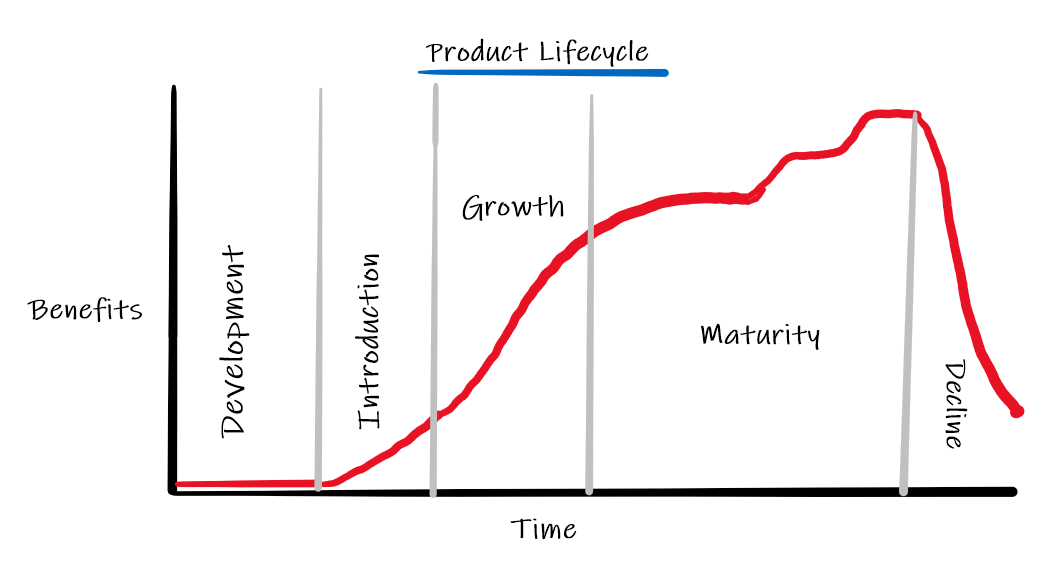Product Lifecycle
Product lifecycle is a set of stages that a product generally goes through from its envisioning to the product being taken off from the market. Broadly the product lifecycle curve looks like this

Development Stage
This stage is generally before the launch of your product. You may end up significantly changing your strategy for achievement of your vision. Following are some of the things you may end up doing in this phase of the product
- Envisioning the product,
- Developing a high level product strategy
- Making sure that the product makes sense from the market perspective
- Doing research on the product, market and doing validation work
- Arranging for some funding to even get a minimum marketable product out into the market.
Introduction Stage
This stage of the cycle could be the most expensive for a company launching a new product. The size of the market for the product is small, which means sales are low, although they will be increasing. On the other hand, the cost of things like research and development, consumer testing, and the marketing needed to launch the product can be very high, especially if it’s a competitive sector. Following are the possibilities of what may be seen in this stage
- Minimum Marketable Product (MMP) might get released into the market
- The Product Adapts and Improve fast – Product Development Teams may iterate the product release
- You may see incremental changes (sometimes drastic changes may be required)
Growth Stage
During this stage a strong sales and profits are typically seen. This makes it possible for businesses to invest more money in the promotional activity to maximize the potential of this growth stage. Possible considerations during this stage may be as follows
- Sustain the Growth – Focus on current customer’s satisfaction •
- Penetrate the current market fully
- Fend off competitors by keeping your product more attractive. Stay 2 steps ahead of competitors
- Create variants
- Generate revenues and profits
Maturity Stage
This is probably the most competitive time for most products and businesses need to invest wisely in any marketing they undertake. During the maturity stage, the product is established and the aim for the manufacturer is now to maintain the market share they have built up. They also need to consider any product modifications or improvements to the production process which might give them a competitive advantage. Following are possible considerations during this stage
- Extend the maturity as much as possible
- Defend your market share
- Focus on Revenues and profits
- Revive Growth by
- Searching for new markets to launch
- Bundle products
- Partner with other players
- You may see the following “Growth-Maturity” repeated cycles like below

- Maturity stage is a good time to think about introducing new products into the market
Decline Stage
Eventually, the market for a product will start to shrink, and this is what’s known as the decline stage. This shrinkage could be due to the market becoming saturated (i.e. all the customers who will buy the product have already purchased it), or because the consumers are switching to a different type of product. Some of the considerations during the Decline Stage could be
- Reduce cost
- Keep the product profitable
- Create exit strategy
- Create pivoting strategy (moving the user base to a new product) if another product is launched
Conclusion
Generally Product goes through a lifecycle which has been seen in many products. This is generalized curve I have discussed. However each product may go through various other stages or may even skip a stage.